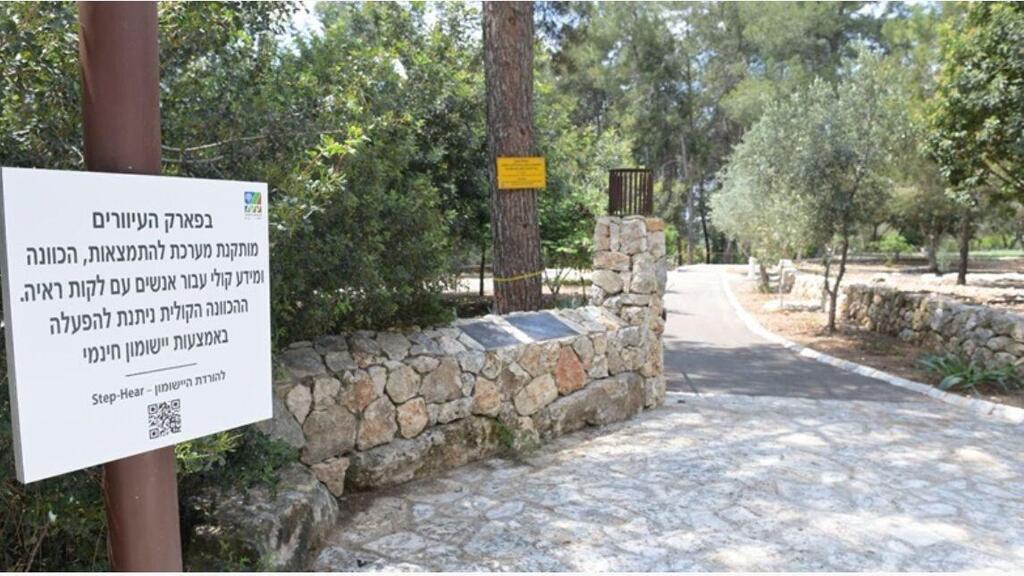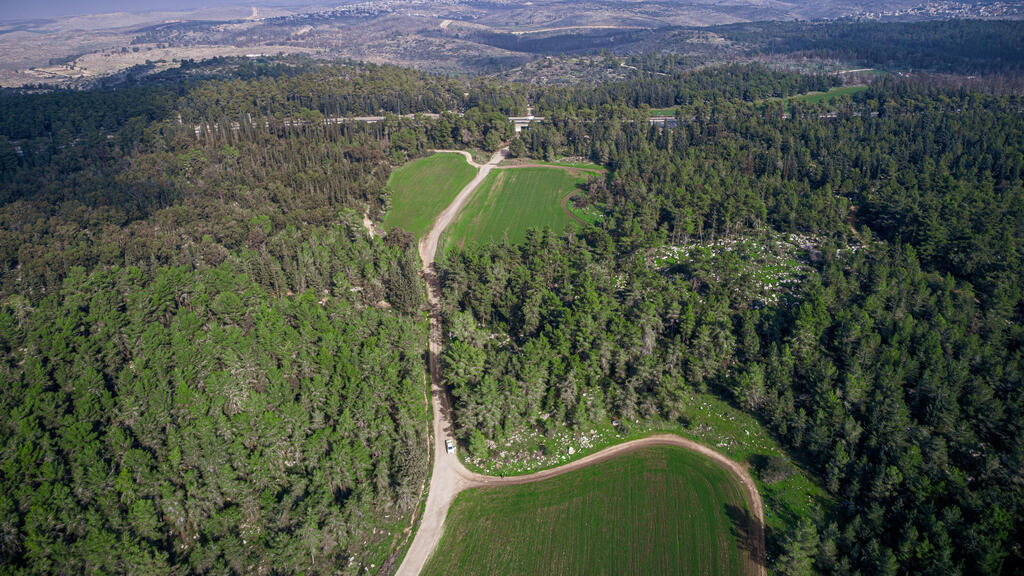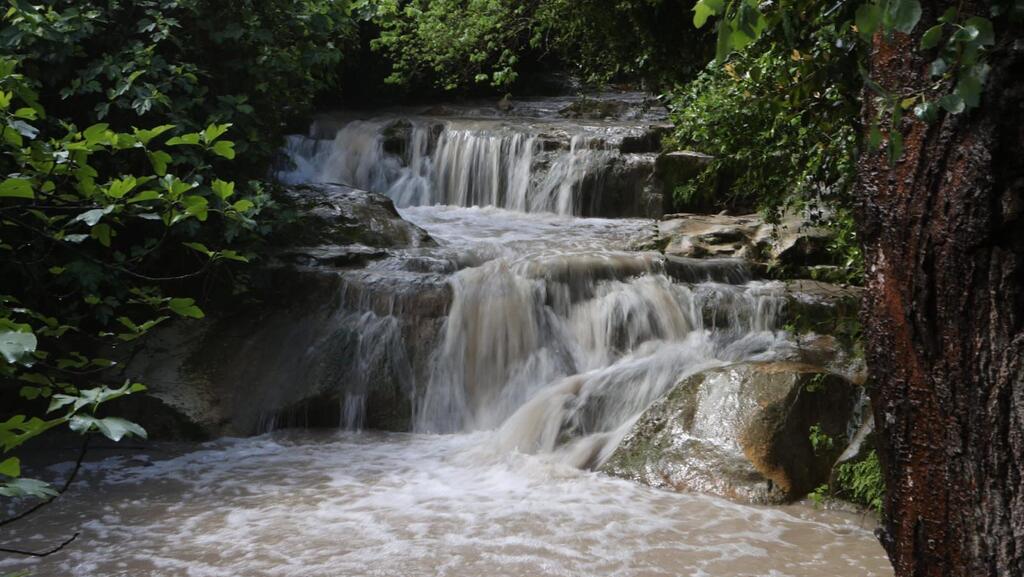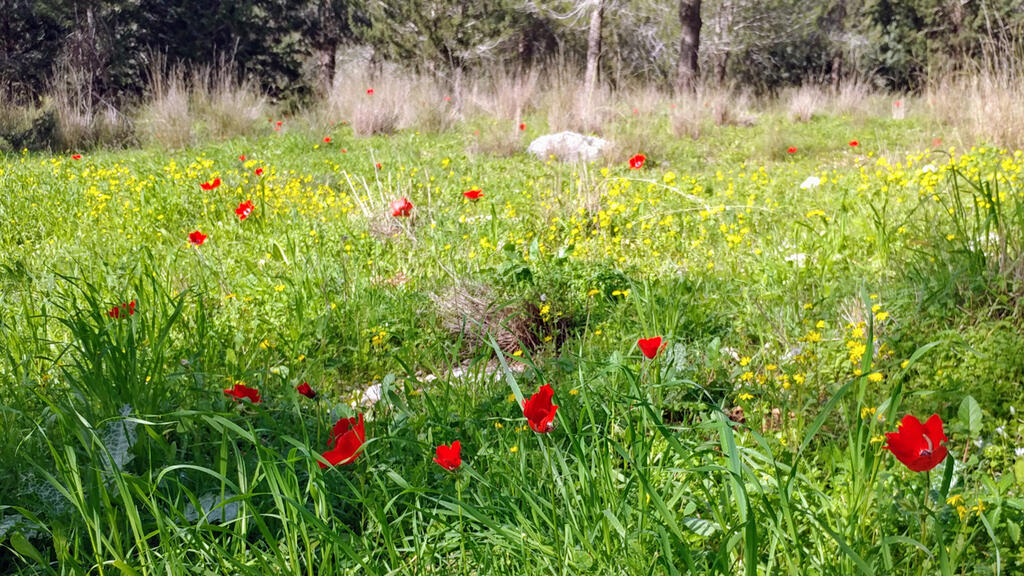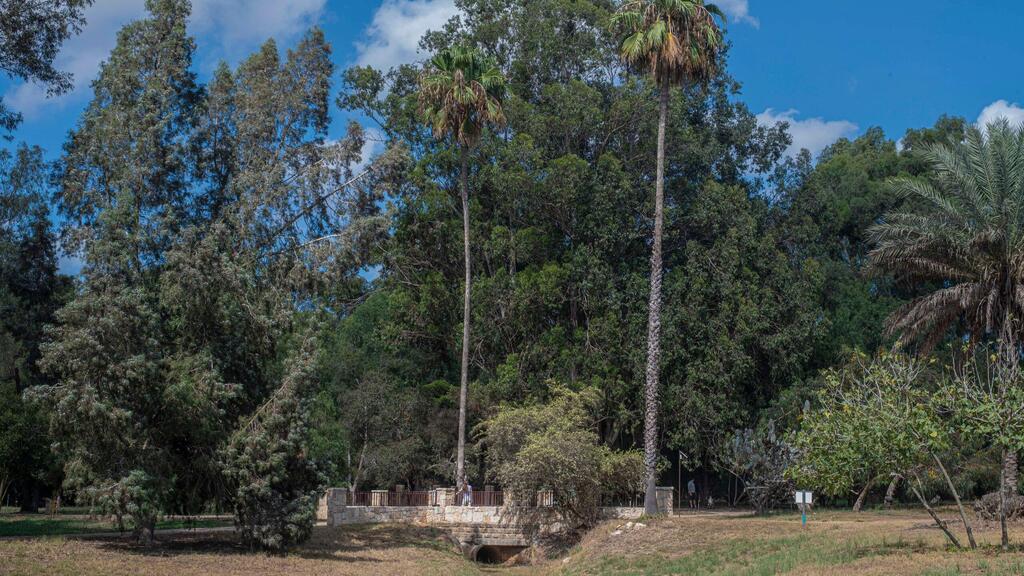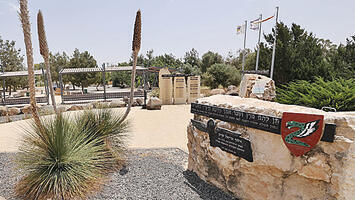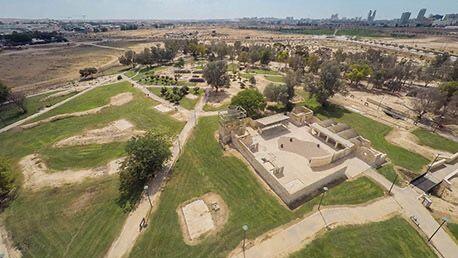For years, Keren Kayemeth LeIsrael-Jewish National Fund (KKL-JNF) has invested significant resources and thought into ensuring that its forests, parks, and recreational areas are accessible, comfortable, and safe for people with disabilities, underscoring KKL-JNF’s awareness of their unique needs.
Below are some highlights of nature sites designed to meet the requirements of Israel’s Equal Rights Law for Persons with Disabilities and accessibility regulations.
"KKL-JNF is upgrading its forests and promoting accessibility in open spaces to enable individuals with disabilities to enjoy, explore, and experience nature," said KKL-JNF Accessibility Coordinator Merav Davidian.
"Accessible planning in open spaces differs from urban planning. We strive to allow people with disabilities to immerse themselves in natural environments while ensuring sites are fully inclusive for all visitors."
Highlights of accessible nature sites
Renewed blind trail at Ben Shemen Forest:
A 500-meter trail at Ben Shemen Forest features different points of interest, including an ancient winepress and fruit orchard. The trail has been re-paved with asphalt, featuring inclined edges as guiding lines for the visually impaired and wheelchair-friendly facilities. Audio guides, Braille signs, and accessible picnic areas enhance the experience.
The wooden benches have been renovated, and adjacent spaces have been created to allow wheelchair users to sit comfortably alongside others. To emphasize activity areas, stone strips embedded in the asphalt mark their entrances, doubling as tactile indicators for those with mild visual impairments.
As part of the trail's upgrades, audio elements have been integrated, allowing visitors to listen to the site’s story through a dedicated app. Along the trail, braille signs featuring diagrams and tactile elements are provided. The herb garden has been lowered for easier access, and new herbs have been planted. Nearby, two accessible picnic areas have been established. The park is also located near a cycling route where tandem bicycles, adapted for blind riders, are commonly used.
Nahal HaShofet trail:
Located near Yokneam, this circular 1.6 km trail allows visitors to enjoy waterfalls, streams, and vibrant vegetation. The fully paved path includes tactile directional signs and simplified linguistic explanations for those with cognitive challenges, ensuring the trail is enjoyable year-round.
A hike along Nahal HaShofet is a delightful experience for the whole family. Located near Yokne’am and Kibbutz HaZore’a, the trail meanders through hills adorned with forest trees, with the stream playfully accompanying the path.
Along the way, hikers encounter lush riparian vegetation, a small waterfall, the remains of an old flour mill, and a spring emerging from a carved tunnel. In winter, the stream flows vigorously, and the surrounding slopes are carpeted with vibrant anemones, cyclamens, and other flowers. By late summer, the stream’s flow diminishes, but throughout the year, visitors enjoy the shade provided by wild trees and forest trees planted by KKL-JNF.
Khirbet Tinshemet at Shoham Forest Park:
The site of Khirbet Tinshemet is located in Shoham Forest Park, which spans around 2,000 dunams to the east of Shoham. Once neglected, with piles of waste scattered throughout, the forest has been transformed into a flourishing community forest. The Jewish National Fund (KKL), the local council, and the residents of Shoham work together to maintain and develop the forest park as a center for hiking and nature-based activities.
The forest stretches across low hills, featuring ancient terraces and orchard trees, with picnic areas, walking and biking trails, and archaeological sites. In the winter and spring, the area is colored by the blooming of anemones, cyclamens, and other vibrant flowers.
The Khirbet Tinshemet archaeological site, which is accessible to wheelchairs and people with visual impairments, was discovered in 1986. Nine years later, archaeological excavations uncovered the remains of a church from the Byzantine period (4th century CE), alongside three carved stone graves and a hewn water reservoir with a staircase at its corner.
A unique find at the site includes a 67 cm-diameter marble medallion with a carving of Tyche, the goddess of fortune, considered the patroness of many cities. A short, accessible trail leads south from here to an open-air classroom on a low rock platform, near the remnants of a hewn winepress and an open pit that served as a lime kiln.
Accessibility at the site: The entire site, including the archaeological area, is accessible to all visitors. For people with visual impairments, there is an accessible audio guide system with simplified language and a step-hear system, providing audio information based on the user's choice. The system helps guide those with visual impairments about their location and explains the site. Additionally, the site has accessible parking, walking paths, an open-air classroom, and a viewpoint at the entrance.
Ilanot Forest botanical garden and visitor center:
Anyone who enjoys walking among trees is invited to visit a unique forest botanical garden in the heart of the Sharon region, where 350 species of trees from around the world grow side by side, some with fascinating exotic appearances.
The site won the "Accessibility Israel" award. The area has signage explaining the different types of trees. In addition, there is an orientation system for people with visual impairments, which provides audio information about the location.
The botanical garden includes an accessible maze made of trees that simulates a tree trunk. The visitor center, dedicated entirely to trees, integrates the latest technologies and offers visitors a unique experience.
The center features an accessible film with subtitles about the forest for people with hearing impairments, a trivia quiz, interactive stations on forestry in Israel, forests around the world, tree secrets, and a virtual reality bike tour, which is also accessible to wheelchair users.
At the site, visitors can enjoy a 2.5 km of high-quality accessible trails within the forest, allowing easy movement for those in wheelchairs or strollers, while offering a refreshing green space in the heart of the country Accessible parking, picnic tables, benches, water fountains, and accessible restrooms.
The Black Arrow Memorial:
This impressive monument takes us back to the legacy of the paratroopers and the 1950s reprisal operations. The memorial features stone pillars depicting the reprisal actions of the paratroopers and battle diagrams of the corps. Another monument honors the fallen soldiers. Near the memorial, the Jewish National Fund (JNF) has placed a parking lot with picnic tables.
A little further south of the memorial is the Armistice House – a single-story building with a tile roof. JNF renovated the structure, which was used by the Israeli Armistice Committee delegations when they met with Egyptian representatives. The site has been upgraded, making it fully accessible, from the parking areas to the monument and the Armistice House, including benches, tables, water fountains, and accessible restrooms.
Beit Eshel historical site:
Located within the Be'er Sheva River Park, the Be'er Sheva Lookout is one of three observation points established in the summer of 1943 by the Jewish National Fund (JNF) in the Negev, marking the beginning of pioneering settlement in the region.
Before the lookout was built, drilling for water was carried out, but only in the sixth drill did they find brackish water. At this site, the decision was made to establish the settlement, which was populated by the Yoav organization, founded by immigrants from Austria and Germany.
The lookout was built with a walled courtyard, similar to settlements like Tel Hai, Kinneret, and Ben Shemen. The first settlers developed agricultural land and were among the first to bring their children to live permanently in the Negev.
In 1947, hostilities began against the settlement, and in May 1948, the Egyptian army attacked with artillery and mortars. The residents bravely endured heavy bombardments for about five months, until the IDF captured Be'er Sheva. The lookout was completely destroyed, and in January 1949, its residents were evacuated to a temporary camp in Kibbutz Vitkin.
Get the Ynetnews app on your smartphone: Google Play: https://bit.ly/4eJ37pE | Apple App Store: https://bit.ly/3ZL7iNv
After many years of standing abandoned and ruined, the lookout was restored and is now managed by the JNF. Recently, it was designated a national heritage site. In 2018, the Israel Sites Preservation Council helped restore and preserve the fortifications, including the stone houses, water tower and bunkers. Signage includes texts and photographs that tell the emotional historical story of the settlement’s short but significant contribution to Jewish settlement in the Negev.
Visitors to the Be'er Sheva Lookout can enjoy a tour of the historical buildings and ruins. The site is flat, making it accessible for wheelchairs. In addition to the accessible trails, explanation stations, and the site itself, the JNF has made parking, picnic tables, restrooms and drinking fountains accessible. There are also accessible benches throughout the site for resting.


